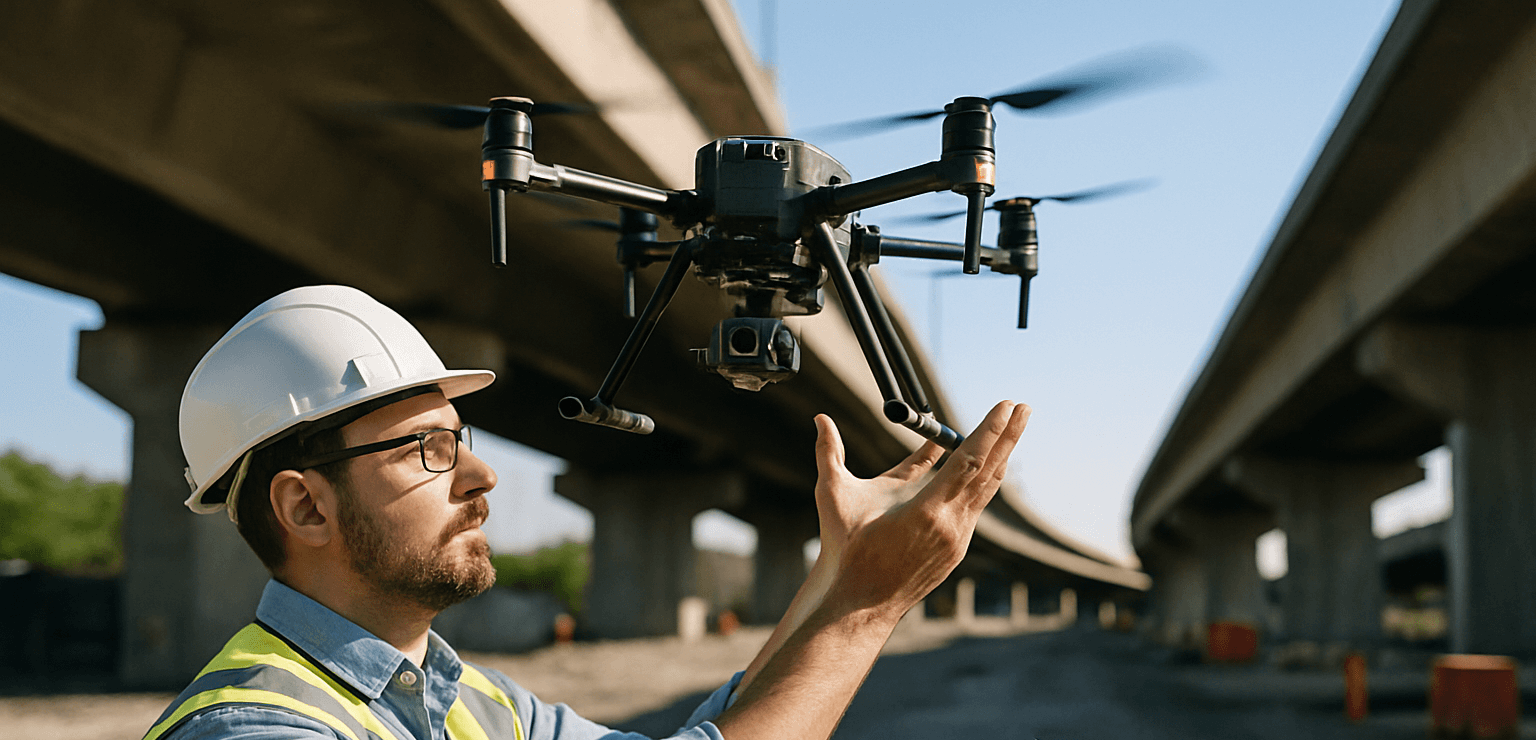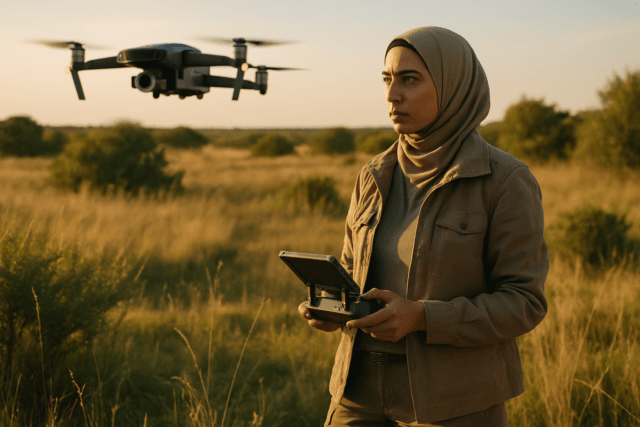Drones have emerged as a transformative technology, offering unprecedented cost savings across various industries. From agriculture and construction to logistics and security, businesses are increasingly leveraging drones to optimize operations, reduce expenses, and gain a competitive edge. This article delves into the myriad ways drones are driving cost efficiency, highlighting real-world examples and potential future advancements.
Revolutionizing Industries: How Drones Deliver Cost Savings
1. Agriculture: Precision Farming for Optimized Resource Use
Drones are revolutionizing farming practices by providing farmers with unprecedented insights and capabilities.
- Precision Spraying and Seeding: Drones equipped with advanced sensors can precisely apply pesticides, herbicides, and fertilizers, reducing wastage and minimizing environmental impact. Similarly, aerial seeding using drones can expedite planting processes and lower labor costs. Studies show that targeted application can reduce chemical usage by up to 40% and increase yields by up to 20%.
- Crop Monitoring and Health Assessment: Drones can quickly survey large areas of farmland, monitoring plant health, detecting diseases, and identifying water stress. This enables farmers to take timely corrective actions, preventing crop losses and optimizing resource allocation.
- Soil Analysis: Drones capture detailed images of the ground, assessing soil quality and determining optimal planting strategies.
- Irrigation Management: Equipped with thermal sensors, drones can identify areas needing more or less water, optimizing irrigation and conserving water resources.
For farmers spraying 1,000 acres annually, drone applications can cost approximately $12.27 per acre, compared to custom hire rates of around $16 per acre. Automation could lead to a 90% reduction in costs.
2. Construction: Enhancing Efficiency, Safety, and Accuracy
Drones are enhancing efficiency, safety, and cost-effectiveness in the construction industry.
- Streamlined Communication: Drones capture photographs from the same coordinates during the duration of a project to provide a timelapse of the progress.
- Reduced Surveying Time: Depending on the site, conventional surveying can take days – with drones, it can take minutes.
- Accurate Material Estimates: Drones can quickly provide a precise representation of the area, so construction companies can get an accurate estimate of everything they will need for the project.
- Improved Site Monitoring and Inspections: Drones enable frequent and comprehensive site monitoring, allowing project managers to identify potential issues early and prevent costly delays.
- Enhanced Safety: Construction drone photography can survey things like roofs or high areas of buildings that are hazardous, presenting high-quality images that provide useful information.
92% of construction firms using drones saw ROI within one year. Projects incorporating drones have reported a reduction in inspection times by up to 60% and labor cost savings of 20–30%.
3. Logistics and Delivery: Faster, More Efficient Solutions
Drones offer faster, more efficient, and cost-effective delivery solutions, especially for last-mile logistics.
- Faster Delivery Times: Drones significantly enhance delivery speed, reducing lead times from hours to minutes, particularly in urban areas where congestion delays traditional delivery methods.
- Reduced Operational Costs: Drone logistics can lower operational costs over time by reducing reliance on fuel-powered vehicles and human labor. Model results show that depot-based drone delivery can lead to up to 60% cost savings compared to truck-only delivery when servicing low demand in small areas.
- Vaccine Delivery: The faster speed, low maintenance cost, and absence of road dependency in unmanned aerial vehicles (UAV) have popularized them as an alternative to road delivery.
4. Infrastructure Inspection: Safer, Faster, and More Cost-Effective
Drones are transforming infrastructure inspection by providing safer, faster, and more cost-effective solutions.
- Bridge Condition Monitoring: Drones offer significant indirect benefits, including cost savings from enhanced safety. They reduce reliance on costly safety equipment like harnesses and scaffolding. Operational vehicle cost savings stem from decreased reliance on Under Bridge Inspection Vehicles (UBIVs), including costs for fuel, wages, operational hours, maintenance, and infrastructure expenses for vehicle facilities.
- Reduced Inspection Times and Costs: Drones can complete inspections in a fraction of the time and cost compared to traditional methods, which often involve scaffolding, cranes, and extensive labor. Drones can reduce surveying costs by up to 50% while completing tasks in hours rather than days. This can reduce costs by 40-60% and speed up inspection times by several days.
- Enhanced Safety: Drones eliminate the need for inspectors to enter hazardous environments, reducing the risk of accidents and injuries.
5. Environmental Monitoring: Cost-Effective Data Collection
Drones are valuable tools for environmental monitoring, offering cost-effective and non-disruptive data collection.
- Ecosystem Surveys: Drones reduce costs for environmental surveys by 30-50% and allow for faster data collection on ecosystems, wildlife populations, and habitat changes—all without disrupting the environment.
- Reduced Carbon Footprint: Drones operate with near-zero emissions, making them an eco-friendly alternative to traditional equipment like trucks, helicopters, and cranes, and have a 98% reduced carbon footprint.
6. Security and Surveillance: Enhanced Coverage, Reduced Costs
Drones offer flexible, real-time aerial surveillance, reducing the need for extensive personnel deployment. This approach can cut security monitoring costs by up to 50% while enhancing efficiency.
- Cost Savings: Drones reduce the need for extensive personnel and infrastructure, offering a more affordable security solution.
- Enhanced Surveillance: With their mobility and advanced features, drones provide comprehensive coverage that traditional systems cannot match.
- Scalable Solutions: Whether for a small office or a sprawling campus, drones can easily adapt to different security needs.
- Faster Response Times: Immediate deployment ensures quicker resolution of potential threats.
Quantifying the Savings: Key Metrics and Examples
Several metrics highlight the potential cost savings of drone technology:
- Return on Investment (ROI): 92% of construction firms using drones saw ROI within one year. AI drones deliver documented ROI achievements between 90-300% depending on application.
- Labor Cost Savings: Projects incorporating drones have reported labor cost savings of 20–30%.
- Inspection Time Reduction: Drones can reduce inspection times by up to 60% in construction projects. A 50–60% reduction in inspection time is achievable.
- Cost Reduction in Agriculture: Automation could lead to a 90% reduction in costs in agricultural applications. Drones can reduce chemical usage by up to 40% and increase yields by up to 20%.
- Delivery Cost Savings: Depot-based drone delivery can lead to up to 60% cost savings compared to truck-only delivery when servicing low demand in small areas. Drones can reduce delivery expenses by 30%.
- Surveying Cost Reduction: Drones can reduce surveying costs by up to 50% while completing tasks in hours rather than days.
Case Studies:
- Commercial Office Renovation: A major commercial developer used construction drones to monitor the renovation of a 20-story office building. By deploying drones, the inspection time was reduced by over 60%, and labor costs were slashed by nearly 30%. The drone-generated 3D models enabled early detection of structural issues, preventing costly delays and contributing to a 25% overall improvement in project ROI.
- Highway Infrastructure Project: In a state highway construction project, drones were used for routine progress tracking and safety inspections. The aerial footage provided by these construction drones helped the project team detect hazards early, resulting in a 40% reduction in safety incidents. Additionally, the high-resolution maps enabled better logistics planning, reducing material delivery times and shortening the overall project timeline by 15%.
- Offshore Drone Delivery: Reductions in charter costs, fuel consumption, insurance premiums, and personnel risk translate to double-digit operational savings annually.
Cost Considerations: Initial Investment and Operational Expenses
While drones offer significant cost-saving potential, it’s crucial to consider the initial investment and ongoing operational expenses.
Initial Investment Costs:
- Drone Purchase: High-quality mapping drones can range from $30,000 to upwards of $200,000. Basic drones with simple cameras may cost a few hundred pounds, while advanced models for detailed tasks like aerial mapping or aerial seeding can go well into the thousands.
- Accessories and Software: Additional costs may include accessories and specialized software for processing and analyzing the captured data. Specialized drone solutions provide turnkey capabilities designed to maximize ROI.
- Training: Training for field application specialists (FAS) is essential, involving costs related to training programs.
- Infrastructure: Supporting equipment such as charging stations, data processing tools, and communication systems are essential.
Operational Costs:
- Maintenance and Upgrades: Regular upkeep, software updates, and replacements of components add to the operational costs.
- Personnel: Drone operations require skilled operators and maintenance technicians.
- Insurance: Insurance and regulatory fees.
- Energy Costs: Most delivery drones are electric, which generally results in lower energy costs compared to fuel-powered vehicles used by traditional couriers.
Maximizing ROI: Strategies for Success
To maximize ROI with drone services, businesses must:
- Identify Specific Needs: Businesses must identify their specific needs and find the right service provider.
- Invest in Training: Training is a crucial factor in achieving desired results.
- Optimize Workflows: Continuously optimize their operations. Factors such as data analysis, workflow efficiency, and regulatory compliance play a significant role in achieving desired results.
- Choose the Right Service Provider: Selecting the right service provider is critical.
The Future of Drone Technology: Autonomous and AI-Powered Solutions
The future of drone technology in construction is promising. Autonomous drones equipped with AI that can make decisions independently, further improving efficiency and reducing costs.
Innovations such as hydrogen-powered drones, drone swarms, and AI-based fleet coordination will expand the scale and scope of offshore drone applications.
Conclusion: Embracing the Drone Revolution for Cost Efficiency
Drones are proving to be a powerful tool for driving cost savings and improving efficiency across a wide range of industries. By automating tasks, collecting valuable data, and providing unprecedented insights, drones are enabling businesses to optimize their operations, reduce expenses, and gain a competitive edge. As technology advances and adoption widens, the potential for drone cost savings will only continue to grow, transforming industries and creating new opportunities for innovation and growth.





